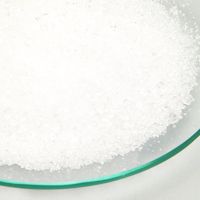My Cart
Your Shopping Cart is currently empty. Use Quick Order or Search to quickly add items to your order!
By Felicia Cherry, Product Manager
Physical Science, Earth Science, and Physics;
and Bruce Wilson, Product Manager
Chemistry

You have 3 little white salts. When dissolved in water, 1 little salt gets hot, 1 little salt gets cold, and 1 little salt stays at room temperature. How can you tell which will do what by looking at the starting material? You can’t! Use this fun activity to help your students learn about thermochemistry, chemical and physical changes, and a valuable safety lesson about working with chemicals. Your students will discover the discrepant event that occurs when 3 white salts dissolve in water.
This activity uses chloride salts of lithium, potassium, and sodium. Dissolved in water, these salts change the temperature of the water by the following amounts:
Why do these Group I chloride salts give such varied results? Because of the enthalpy of solution—the heat change associated with a solid substance dissolving in a solvent—described by this equation:
XCl(s) → X+ (aq) + Cl- (aq)
In this case, the solvent is water. See the enthalpies of solution below:
LiCl –37.0 kJ/mol
KCl +17.2 kJ/mol
NaCl +3.9 kJ/mol
Note: Always read material safety data sheets (MSDS) and follow instructions carefully.
Most students will correctly predict that the salts will dissolve in water based on the solubility rules but may not consider temperature change. The dissolution of a salt in water is a physical change; there is no chemical change associated with this process.
Note: Point out that it is not always possible to predict a substance’s physical properties (such as heat of solution) based on its appearance or chemical formula. Therefore, always treat chemicals with care.
The 1st and 2nd changes are endothermic but the 3rd change is generally exothermic. For small, charged ions, the 3rd change is generally more exothermic than for larger, similarly charged ions. This is because the interaction of the smaller ion with the solvent is stronger. Therefore, lithium chloride has an exothermic heat of solution whereas potassium chloride has an endothermic heat of solution.